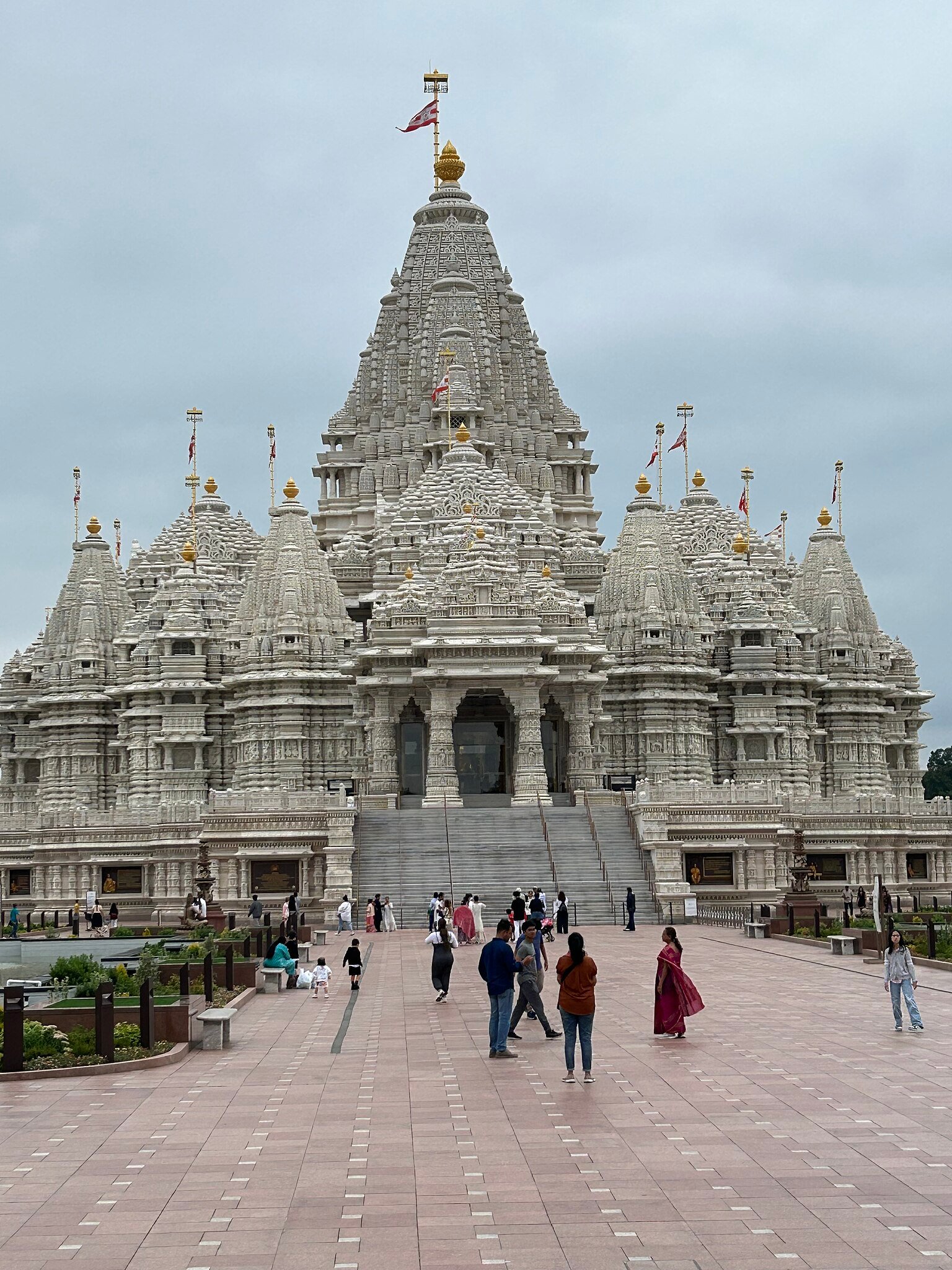The accusations against BAPS collapsed, exposing how minority religions are too often miscast as criminal. When devotion is mistaken for coercion, freedom of religion is put at risk.
by Marco Respinti

Who, in our time, still dares to defend enslavement? Who would justify using the poor, driven by necessity, as slave labor—exploiting migrants, denying them safety, dignity, and fundamental guarantees? Only criminals. And yet, paradoxically, this is precisely how certain voices in the world are now trying to depict religious communities: as if they were vast networks of organized exploitation, hiding behind a thin varnish of spirituality, while, in truth, working as ruthless centers of power and domination.
The narrative is familiar and dangerously persuasive. Everything, we are told, is the fault of “cults.” Some obscure religious movements, professing even darker doctrines, are accused of acting like gangs of thugs: exploiting the credulous, siphoning money through donations that enrich only the few, “brainwashing” followers, deceiving the world, and committing various crimes. The rhetoric begins by drawing a neat moral boundary between “cults” and “mainline” religions. But the vocabulary itself is already corrupt.
“Cult” is a non-scientific, polemical label, easily weaponized by self-styled “anti-cultists” to stigmatize whatever they dislike. “Mainline religions” is a hollow expression, appealing to ignorance: millions of believers around the globe belong to groups most people in the world, or only in the West, have never even heard of, and are thus dismissed as “non-mainline.” In sum, what begins as an attack on so-called “cults” quickly mutates into a broader suspicion of minority religions. And the target, in the end, is belief itself.
Once accusations of “demonstrated” crime enter the scene, the public readily concludes that religion is not merely outdated but dangerous. And when such crimes are presented not as the deviation of a few rogue leaders but as the logical outcome—or worse, the doctrinal essence—of a religious worldview, the conclusion becomes inescapable: religion, they say, is a machinery of corruption.
I began this article by rhetorically asking who could defend slave labor and the exploitation of human beings, to introduce my denunciation of the manipulation of truth practiced by those who, ironically, accuse religious groups of precisely such immoral and illegal acts. Consider the case of the Bochasanwasi Akshar Purushottam Swaminarayan Sanstha (BAPS), which has unfolded in the United States over the past four years.
BAPS is an organization that crystallizes a modern Hindu religious tradition that originated in India at the dawn of the 19th century, founded by Sahajanand Swami (1781–1830), later known as Swaminarayan, as a reformist response to social and religious decay. His adepts considered Swaminarayan a divine manifestation of Krishna and Narayana, who are incarnations or forms of the god Vishnu. Belonging to the Vaishnava tradition devoted to Vishnu, and emphasizing moral discipline, devotion, and community service, the movement evolved into a global network of temples, schools, hospitals, and humanitarian projects. The tradition came to consist of several branches, the most prominent of which is BAPS, founded in 1907 by Shastriji Maharaj (1865–1951) and today counting about five million members. BAPS is one of the largest and most influential branches of modern Hinduism, whose adherents can be found across India, North America, Europe, Africa, and beyond. Its members are not fringe devotees, but part of a disciplined, transnational religious community deeply rooted in Hindu tradition and civic engagement.

BAPS is known for its emphasis on spiritual volunteerism and its architectural marvels displayed in the construction of grand temples (in the Hindu tradition, designated with the Sanskrit word “mandir”) both in India and abroad, among which the most famous are the Akshardham in Delhi (which this writer had the occasion to visit and admire) and other monumental buildings in the UK, Africa, the Middle East, Australia, Canada, and the United States. In the US, a majestic BAPS temple is located in Robbinsville, New Jersey, 16 miles northeast of Trenton, the capital of New Jersey, and a little less than 50 miles from Philadelphia, Pennsylvania, in the same direction. It is the largest Hindu temple in the Western Hemisphere and the third largest in the world.
For four years this not-at-all marginal group, BAPS, has been accused of criminally exploiting Indian migrant workers during the construction of the Robbinsville facility. But in the end, the entire case collapsed. After four years of investigation, the U.S. Department of Justice and the United States Attorney’s Office for the District of New Jersey decided to close their investigation without charges.
What should be immediately noticed and emphasized is that the case was initiated by the media in May 2021 as a public denunciation of alleged misdeeds committed by BAPS, but in reality exemplifying a disturbing trend: the presumption of guilt applied to religious minorities, especially those labeled as “cults.” What was presented as a shocking exposé turned out to be an orchestration by certain media outlets that employed precisely the same methods they attribute to such groups—mixing truth with falsehood, twisting facts, constructing alternative realities, and manipulating readers to accept their ideology.
The narrative was familiar. A minority religious group was accused of coercion, exploitation, and manipulation. The complexity of religious volunteerism, spiritual discipline, and communal labor was flattened into a trafficking storyline that fit neatly into pre-existing biases. In their fervent zeal to denounce what was vaguely defined as mind control, the media became nothing less than “brainwashers” themselves. In condemning as a “cult” devoted to organized crime one of the largest Hindu groups in the world, they behaved like the very thing they claimed to expose—a “cult” of their own, founded not on spiritual belief but on the worship of suspicion.
As a result of this unprofessional and draconic way of misinforming the public, based on sensationalization and emotions, several agencies, including the FBI, the Department of Homeland Security and the Department of Labor, carried one of these spectacular raids against religious minorities that scholars Stuart A. Wright and Susan J. Palmer have studied in their compelling 2015 book “Storming Zion: Government Raids on Religious Communities” as a form of baroque theater intended to publicly stigmatize religious minorities with the help of the press.
Yet, as the dust settles, the case has come to symbolize something far deeper than a labor dispute: the vulnerability of “minority” religions (even if they count millions of adherents) to being mischaracterized and criminalized under the expansive umbrella of anti-trafficking laws.
This dynamic is not unique to the United States. In Argentina, as scholar María Vardé documents in a study published in “The Journal of CESNUR,” anti-trafficking bureaucracies have adopted anti-cult categories such as “brainwashing” and “coercive persuasion” to prosecute evangelical churches and charities and spiritual movements like the Buenos Aires Yoga School. Vardé writes that such terminology is used in the judicial sphere, the media, and public campaigns, often fabricating “victims” who are in fact volunteers who have freely chosen to serve. Happily, the Argentinian judiciary has started resisting the ill-founded claims of some prosecutors.
While the Argentine context differs, the underlying mechanism is the same: trafficking laws are stretched to encompass religious practices that according to critics and media deviate from mainstream norms, especially when those practices involve communal living, spiritual hierarchy, or unpaid labor.
For example, anti-cult journalist Kevin Dugan seized on the BAPS case to bolster his campaign of trafficking accusations against the Church of Scientology. He claimed that the BAPS allegations “have parallels with some of the accusations made by former Scientologists” around immigration, labor, and spiritual obedience.
But such comparisons are fraught. What in religion is often understood as voluntary service—an altruistic offering of time and labor—is easily recast by critics as coercion. The line between devotion and exploitation becomes blurred, not by the facts on the ground, but by the lens through which those facts are interpreted.
The trafficking paradigm, originally designed to combat forced labor and sexual exploitation, has gone through an interpretative expansion, encompassing a wide range of activities not necessarily linked to human rights violations. As Vardé notes, this expansion can dilute attention from more specific human rights violations and lead to the criminalization of legitimate religious and cultural practices.

In the BAPS case, the trafficking narrative collapsed. The authorities found no evidence of coercion or abuse. The accusations were dismissed, and BAPS emerged vindicated. It was a victory not just for one organization, but for religious liberty itself.
At the heart of the issue lies a fundamental misunderstanding of religious life. In many faith traditions, volunteer labor is not a transaction but a sacrament and way to serve the divine, build community, and express devotion. To outsiders, especially those predisposed to view minority religions with suspicion, such practices can appear exploitative. But imposing secular labor standards onto spiritual contexts risks erasing the agency and voice of believers.
The BAPS case should serve as a cautionary tale for policymakers, journalists, and activists. Trafficking laws are essential tools for protecting vulnerable populations, but when wielded indiscriminately, they can become instruments of cultural and religious repression. Minority religions, already stigmatized by labels like “cult,” are especially at risk.
In the end, the dismissal of the trafficking charges against BAPS is a victory for common sense applied to religion. It is a reaffirmation of the principle that religious liberty includes the right to define one’s own spiritual path, even when that path involves sacrifice, discipline, and communal labor.

Marco Respinti is an Italian professional journalist, member of the International Federation of Journalists (IFJ), author, translator, and lecturer. He has contributed and contributes to several journals and magazines both in print and online, both in Italy and abroad. Author of books and chapter in books, he has translated and/or edited works by, among others, Edmund Burke, Charles Dickens, T.S. Eliot, Russell Kirk, J.R.R. Tolkien, Régine Pernoud and Gustave Thibon. A Senior fellow at the Russell Kirk Center for Cultural Renewal (a non-partisan, non-profit U.S. educational organization based in Mecosta, Michigan), he is also a founding member as well as a member of the Advisory Council of the Center for European Renewal (a non-profit, non-partisan pan-European educational organization based in The Hague, The Netherlands). A member of the Advisory Council of the European Federation for Freedom of Belief, in December 2022, the Universal Peace Federation bestowed on him, among others, the title of Ambassador of Peace. From February 2018 to December 2022, he has been the Editor-in-Chief of International Family News. He serves as Director-in-Charge of the academic publication The Journal of CESNUR and Bitter Winter: A Magazine on Religious Liberty and Human Rights.



